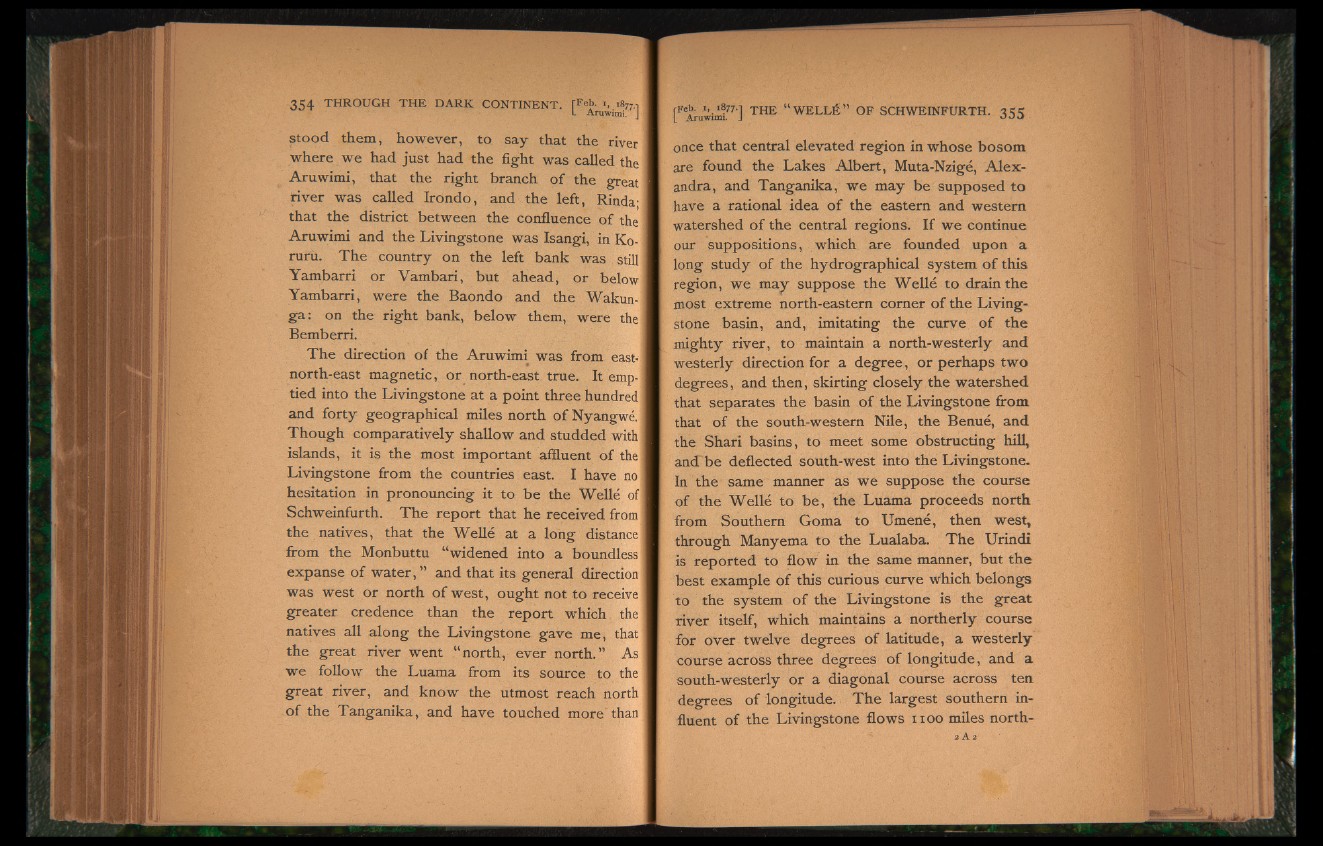
stood them, however, to say that the river
where we had just had the fight was called the
Aruwimi, that the right branch of the great
river was called Irondo, and the left, Rinda-
that the district between the confluence of the
Aruwimi and the Livingstone was Isangi, in Ko-
ruru. The country on the left bank was still
Yambarri or Vambari, but ahead, or below
Yambarri, were the Baondo and the Wakun-
ga: on the right bank, below them, were the
Bemberri.
The direction of the Aruwimi was from east-
north-east magnetic, or north-east true. It emptied
into the Livingstone at a point three hundred
and forty geographical miles north of Nyangwe.
Though comparatively shallow and studded with
islands, it is the most important affluent of the
Livingstone from the countries east. I have no
hesitation in pronouncing it to be the Welle of
Schweinfurth. The report that he received from
the natives, that the Welle at a long distance
from the Monbuttu “widened into a boundless
expanse of water,” and that its general direction
was west or north of west , ought not to receive
greater credence than the report which the
natives all along the Livingstone gave me, that
the great river went “ north, ever north.” As
we follow the Luama from its source to the
great river, and know the utmost reach north
of the Tanganika, and have touched more than
[F A ruwiit77'] THE “ WELLS” OF SCHWEINFURTH. 355
once that central elevated region in whose bosom
are found the Lakes Albert, Muta-Nzige, Alexandra,
and Tanganika, we may be supposed to
have a rational idea of the eastern and western
watershed of the central regions. If we continue
our suppositions, which are founded upon a
long study of the hydrographical system of this
region, we may suppose the Welle to drain the
most extreme north-eastern corner of the Livingstone
basin, and, imitating the curve of the
mighty river, to maintain a north-westerly and
westerly direction for a degree, or perhaps two
degrees, and then, skirting closely the watershed
that separates the basin of the Livingstone from
that of the south-western Nile, the Benue, and
the Shari basins, to meet some obstructing hill,
and be deflected south-west into the Livingstone.
In the same manner as we suppose the course
of the Welle to be, the Luama proceeds north
from Southern Goma to Umene, then west,
through Manyema to the Lualaba. The Urindi
is reported to flow in the same manner, but the
best example of this curious curve which belongs
to the system of the Livingstone is the great
river itself, which maintains a northerly course
for over twelve degrees of latitude, a westerly
course across three degrees of longitude, and a
south-westerly or a diagonal course across ten
degrees of longitude. The largest southern influent
of the Livingstone flows u oo miles north-
2 A 2